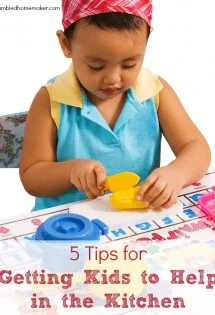 |
| Image by porah |
Guest Post by Jennifer of This Gal’s Journey
When my firstborn was about a week old, I was a mess. Although I had had the textbook natural labor/delivery that I had hoped and prayed for, I had a hard time adjusting to life “on the other side.”
I was exhausted, sore, achy and had the memory of a 90-year-old Alzheimer’s patient. So, when I started getting an odd pain in the back of my head, flu-like muscle aches and chills, I didn’t think anything of it. I figured it came with the territory.
 |
| Image by ywel |
It wasn’t until my mother-in-law said I should call my doctor that I started to think maybe something was wrong. I rang the nurse and told her my symptoms.
She immediately suspected mastitis and asked me if my breast(s) felt warm to the touch. I didn’t think they did, so she asked me to see if they were red at all.
When I looked in the mirror, I was shocked to discover that one breast looked like it had been severely sunburned on one section. The doctor phoned a prescription into the pharmacy and it began to clear within a day or two of beginning antibiotics.
Over the year that I breastfed my first daughter, I suffered mastitis 3 times. I would suffer it another 2 times with my second daughter. Thankfully, I never got it with my third.
I learned several things about how to help prevent mastitis, how to catch it early, and how to help make your treatment the most effective once you are diagnosed.
Help Prevent Mastitis
- Breastfeed often, and equally on both sides. Whether you choose to feed from both sides at each feed, or alternate one breast at each feed, make sure you give equal time on each breast. Even if your baby seems to favor one side over the other (all 3 of mine did!), it’s important to let each breast empty.
- Make sure you have a good latch. Your baby’s mouth should be open wide, and he should have more than just the nipple/areola in his mouth. His bottom lip should be rolled out slightly, and his cheeks should not hollow when he sucks. If you’re not sure if your baby is latched on properly, have a lactation consultant, OB or nurse watch you breastfeed to help reposition if needed.
- Check for any lumps/hard bumps. These are most likely clogged ducts and can lead quite quickly to mastitis. If you discover a clogged duct, massage it frequently and position baby with his chin towards the lump when feeding on that side, if possible.
How to Spot Mastitis Early
- Clogged ducts. As mentioned above, if you have a clogged duct, you are at greater risk of developing mastitis. Check your breast frequently for these. They will typically feel like a hard pea, or marble.
- “Pulling” Sensation in breast when feeding. Not all over, as “letdown” can sometimes feel like a pulling/burning sensation. This is typically localized to one spot on the breast.
- Flu-like Ache. This is always one of the earliest symptoms for me. It begins at the base of my head and will radiate down my neck and shoulders. I also get electric-shock feelings in my joints.
- Redness on the breast. The skin of the breast begins to turn red and/or feel warm like a sunburn. This can occur with or without the presence of a clogged duct (or one you can feel, anyway).
- Fever. Anytime you develop a temperature after child birth, you should inform your doctor. A fever in conjunction with any of the symptoms listed above is a tell-tale sign of mastitis.
 |
| Image by agastecheg |
Maximize Your Treatment
- Feed, Pump and Express from the affected breast as often as possible. Hand express for a minute or two between feeds, in the shower, etc. You want to clear out the ducts as much as possible. It is still safe to breastfeed during mastitis. The milk is not infected.
- Massage the infected breast while feeding. If you have a clogged duct, massage the area several times a day, both during and between feeds. This helps break up the clog and get things moving along.
- Keep an eye on your nipples. If there is something resembling a scab or dry skin, remove it in or after the shower. This is caused by poor latching, and is what caused my first bout of mastitis (as opposed to a clogged duct).
- Hydrate, hydrate, hydrate.
- Take your entire course of antibiotics. Even if you start to feel better and have no more symptoms after a day or two, finish the course.
This is by no means an exhaustive list of symptoms, causes or treatments. If you are ever unsure of anything regarding your body after childbirth, don’t hesitate to contact or doctor or midwife. Just as during pregnancy, they would much rather answer your millionth “silly questions” (those don’t exist, by the way) than have to see you treated, or hospitalized, for something that might have been prevented.
Let us hear from you! Have you had mastitis? What helped or worked for you?Author Bio:
 Jennifer is your typical American wife and mother living life, raising kids, and working, only she’s doing it in Ireland. She has a deep interest in creative family worship, marriage enrichment, and pregnancy/birth education and support. Jennifer passionately loves the Lord, her family, music, dance, writing and chocolate. She writes at this gal’s journey.
Jennifer is your typical American wife and mother living life, raising kids, and working, only she’s doing it in Ireland. She has a deep interest in creative family worship, marriage enrichment, and pregnancy/birth education and support. Jennifer passionately loves the Lord, her family, music, dance, writing and chocolate. She writes at this gal’s journey.
 Jennifer is your typical American wife and mother living life, raising kids, and working, only she’s doing it in Ireland. She has a deep interest in creative family worship, marriage enrichment, and pregnancy/birth education and support. Jennifer passionately loves the Lord, her family, music, dance, writing and chocolate. She writes at this gal’s journey.
Jennifer is your typical American wife and mother living life, raising kids, and working, only she’s doing it in Ireland. She has a deep interest in creative family worship, marriage enrichment, and pregnancy/birth education and support. Jennifer passionately loves the Lord, her family, music, dance, writing and chocolate. She writes at this gal’s journey.
Do you enjoy reading The Humbled Homemaker? Subscribe to receive posts:
- via RSS (like Google Reader/Google Friends Connect) here
- Subscribe for weekly e-mails here
- Subscribe to receive every post (3-4 times/week) via e-mail here
- Find me on Facebook here
- Follow me on Twitter here







Erin
Thanks!